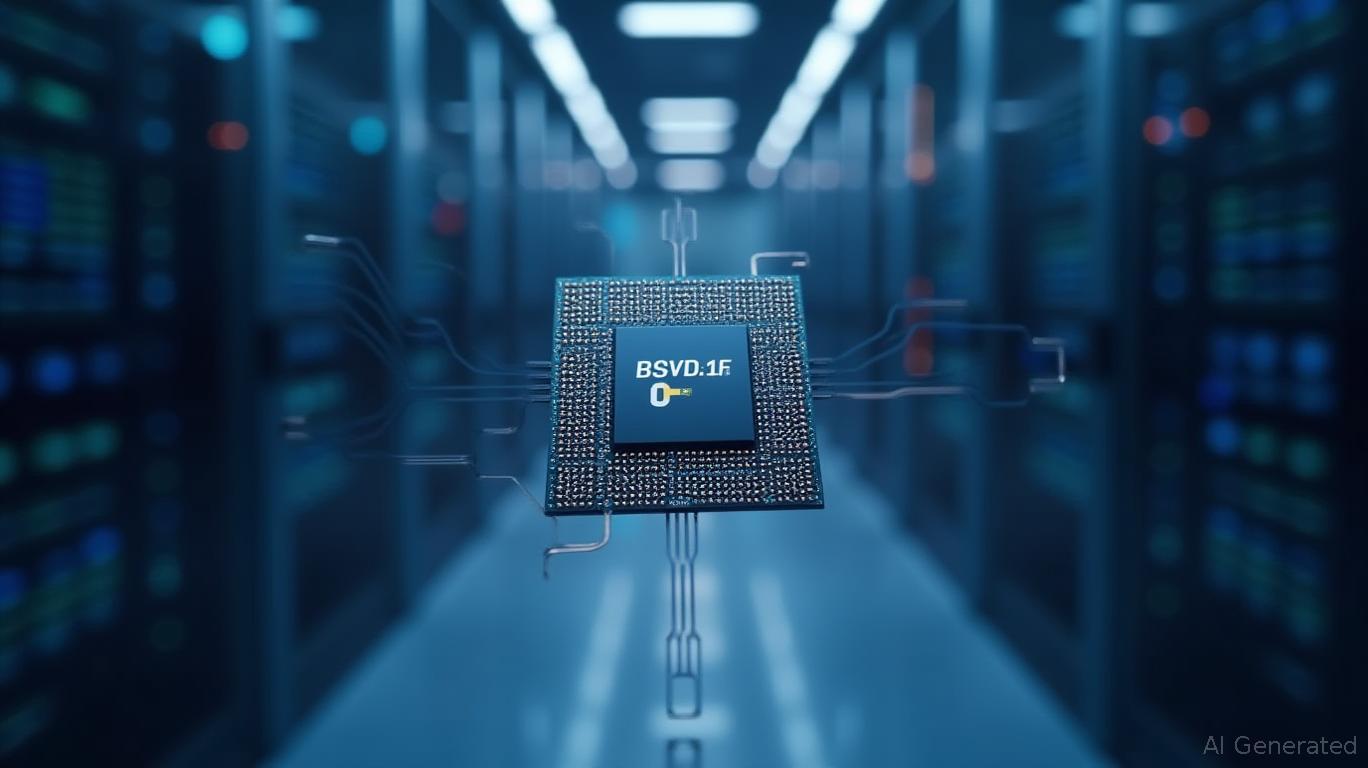Intel's Networking Exit: A Broadcom Inflection Point in AI Infrastructure
The semiconductor industry is undergoing a seismic realignment, and Intel's strategic retreat from its Networking and Edge (NEX) division has just handed Broadcom (AVGO) a golden opportunity to cement its dominance in AI infrastructure. This move, driven by Intel's “back-to-core” restructuring, signals a tectonic shift in the sector—one that investors must act on now.
The Retreat: A Strategic Pivot with Profound Implications
Intel's decision to divest its NEX division (generating $5.8B in 2024 revenue) and slash its workforce by 20% marks a stark admission of defeat in the networking battle. The NEX division's 1% YoY growth and declining edge-computing relevance contrast sharply with its once-robust $8.4B peak in 2022. By refocusing on its core CPU markets (68% PC share, 55% data center share) and its faltering Intel Foundry Services (IFS), Intel is ceding a critical battleground to rivals like Broadcom.

This retreat is not just about cost-cutting. Intel's abandonment of Ethernet switching chips (e.g., Tofino) leaves a vacuum in the AI infrastructure stack. Broadcom's Tomahawk series—purpose-built for hyperscale data centers—now faces no credible competition in this space. Tomahawk chips, which enable terabit-scale data transfers for AI workloads, now account for 30% of Broadcom's $12.3B AI revenue (2024).
Broadcom's AI Infrastructure Play: A Multi-Pronged Domination
Broadcom's advantage extends beyond hardware. Its Jericho chips (telecom routers) and custom ASICs for clients like Alphabet (TPU) and Apple form a cohesive ecosystem. The company's $69B VMware acquisition in 2023 further bolsters its infrastructure software moat, generating $6.7B in 2024 revenue (47% growth). This “hardware-software stack” model is unmatched, and the synergies are accelerating:
- AI Revenue Surge: Broadcom's AI revenue jumped 77% YoY in Q1 2025 to $4.1B, with projections hitting $4.4B in Q2.
- Market Opportunity: Analysts estimate Broadcom's addressable market for custom AI chips (ASICs) could hit $60–$90B by 2027, driven by hyperscalers' shift from GPUs to specialized silicon.
- Margin Power: NEX's 16% operating margin pales against Broadcom's AI segment margins, which exceed 40% due to high differentiation and scale.
Why This Is a Buy Signal for Broadcom Now
The math is irrefutable. Intel's stock trades at a 40% discount to its 2024 highs, while Broadcom's valuation (P/E of 97x) reflects its growth trajectory. Analysts see Intel's stock rising to $21.31 (7% upside from $19.86), but this ignores the structural decline in its non-core businesses. Meanwhile, Broadcom's $400 stock target by 2027 (up from ~$210 today) is achievable if it captures even 50% of its $90B addressable market.
Risks to Consider
- Valuation Concerns: Broadcom's premium P/E could make it vulnerable to market corrections.
- Tech Cycle Cyclicality: A slowdown in data center spending (e.g., AI winter) could dent demand.
- Intel's Core Competence: If Intel's PC/data center dominance falters, its stock could crater further.
The Bottom Line: Broadcom's Time to Shine
Intel's exit from NEX is a sector realignment catalyst. Broadcom's control over AI infrastructure's critical nodes—switching chips, ASICs, and software—positions it to surpass $100B in revenue by 2027. Investors who act now can capitalize on this shift:
- Buy Broadcom (AVGO): The stock's 19% upside to GuruFocus's $23.65 target for Intel is a mispricing. Broadcom's AI tailwinds warrant a premium.
- Avoid Intel's Niche Plays: Unless you're speculating on a turnaround in its 18A node or IFS, Intel's shares remain a risky bet in a crowded CPU market.
The writing is on the wall: Broadcom's AI infrastructure dominance is no longer a “what if”—it's a now.
Final Note: The semiconductor sector's consolidation is underway. Act swiftly on this realignment—Broadcom's moment is here.

Comments
No comments yet